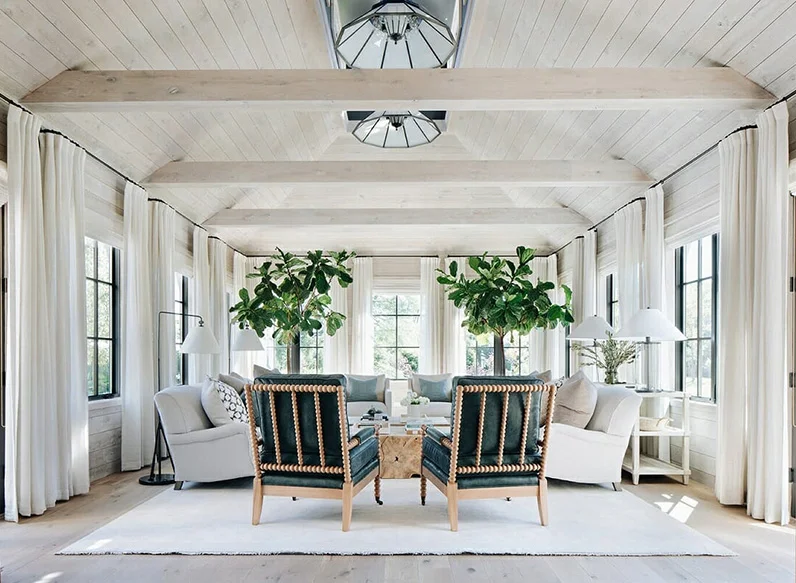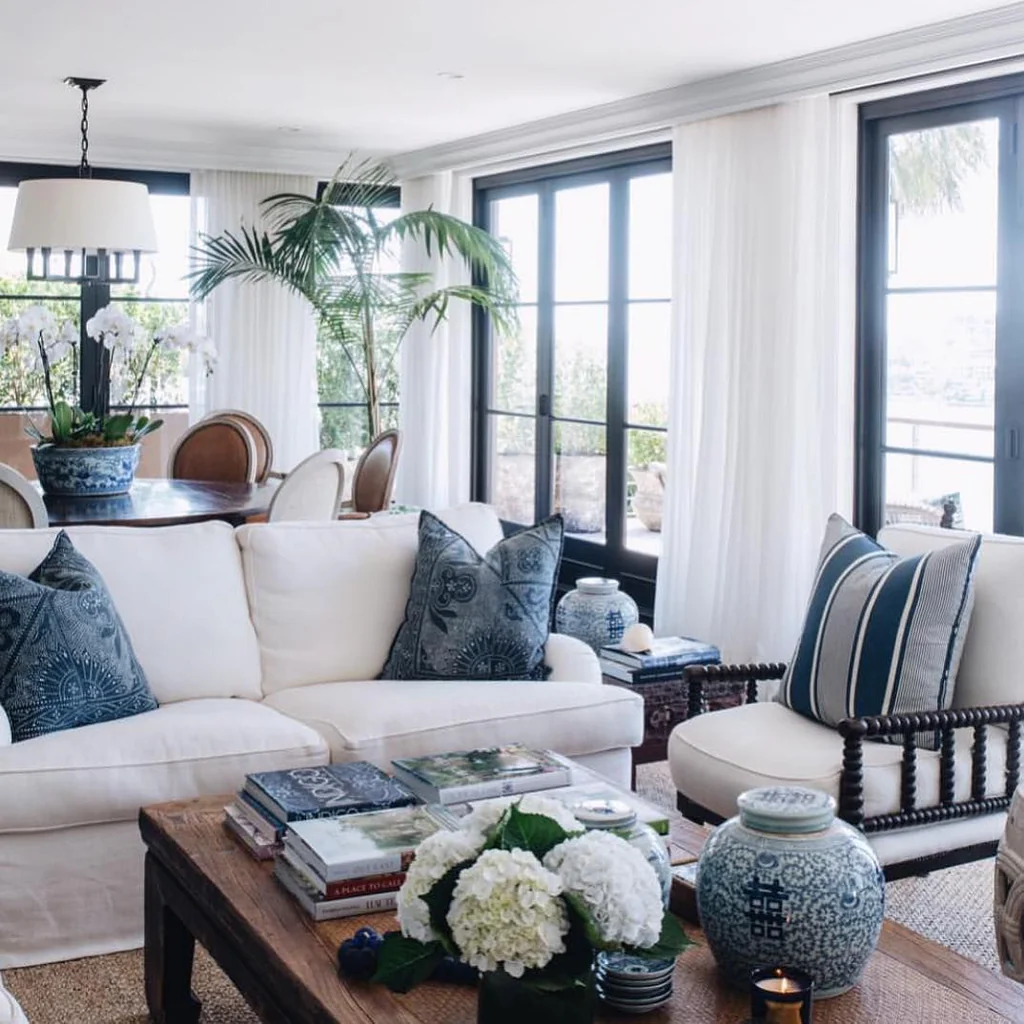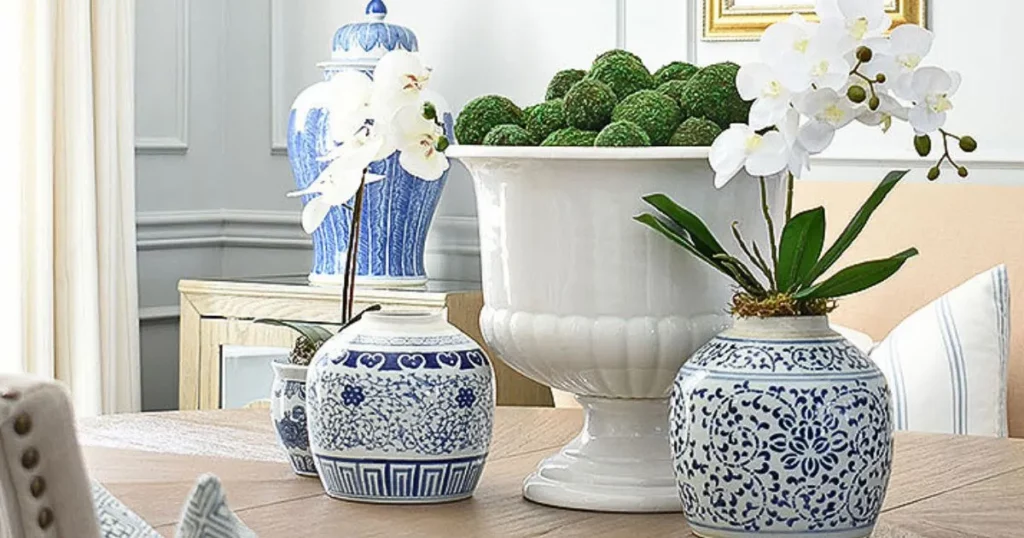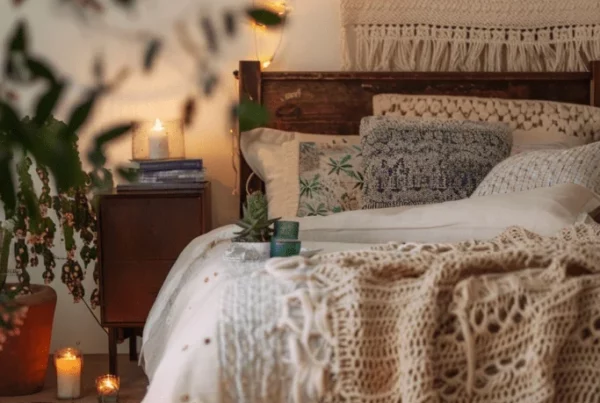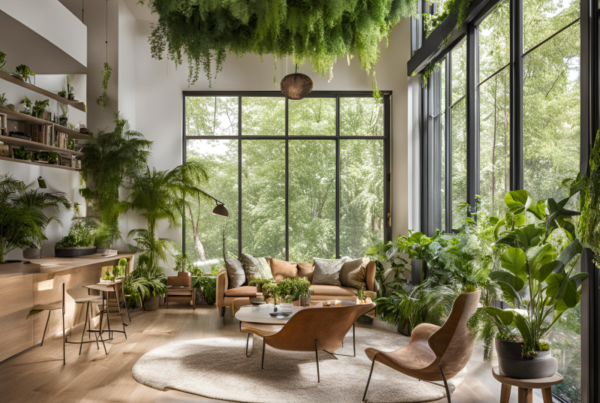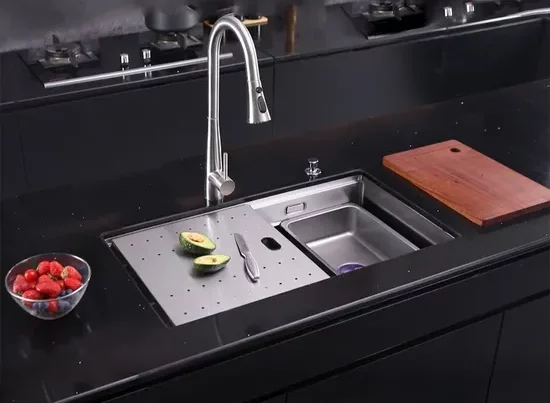Creating a home that reflects your style while fostering comfort and functionality can be challenging. The Hamptons style offers a timeless aesthetic that merges coastal charm with elegance, providing a perfect template for homeowners seeking to enhance their living spaces.
In this article, we will explore practical strategies for incorporating coastal colors, textures, and functional decor inspired by the Hamptons. Whether you’re looking to create serene zen spaces or balance aesthetics with utility, these insights will help you design a home that not only looks inviting but also meets your everyday needs.
Table of Contents
Defining Hampton Style Accessories for Modern Homes
The Hampton style embodies a sophisticated yet relaxed aesthetic, drawing inspiration from coastal living in the Hamptons, New York. As such, the accessories chosen for your modern home should reflect the essence of this style—think nautical influences combined with elegant textures and a palette that mirrors the natural surroundings. Below, we delve into the key defining features of Hampton style accessories that seamlessly enhance contemporary home interiors.
Key Characteristics of Hampton Style Accessories
To truly capture the essence of Hampton style, accessories must possess certain characteristics:
- Coastal Inspiration: Accessories that evoke the beach, such as driftwood sculptures, nautical ropes, and seashell collections, are essential. These elements create a direct connection to the seaside, allowing you to bring the serene beauty of nature indoors.
- Natural Materials: Emphasizing sustainability and a down-to-earth aesthetic, Hampton style integrates natural materials like linen, cotton, rattan, and wood. These textures create warmth and comfort, making spaces feel inviting.
- Color Palette: The typical color palette features soft blues, sandy beiges, crisp whites, and subtle grays. This palette mimics the natural seaside landscape, promoting tranquility and lightness in your home.
Emphasizing Elegance with Functional Design
In a modern interpretation of the Hampton style, it’s essential to incorporate accessories that are not only beautiful but also functional. Here are some ideas:
- Multi-Purpose Decor: Consider furniture and accessories that serve dual purposes—like decorative boxes that offer storage or stylish baskets that can be used to hold throws or children’s toys. This fusion of style and utility reflects the practicality of modern living.
- Statement Pieces: A large art piece or an oversized vase can serve as a focal point in a room, reinforcing the Hampton style’s tendency toward grandeur without losing its casual charm.
- Indoor Plants: Use greenery not just for aesthetic value but also to purify the air and introduce a serene atmosphere. Varieties like fiddle leaf figs or snake plants align perfectly with the coastal theme while promoting a healthy indoor environment.
Balancing Traditional and Modern Elements
The beauty of Hampton style accessories lies in their ability to balance traditional aesthetics with contemporary sensibilities. Here’s how to achieve that blend:
- Mixing Old with New: Incorporate antique accessories alongside modern decor to create a mixed aesthetic. Vintage finds, such as antique lanterns or heirloom ceramics, can enhance the narrative of your space while maintaining the overall coastal chic vibe.
- Minimalistic Approach: Avoid overcrowding your spaces with too many accessories. Instead, curate a selection of carefully chosen pieces that stand out, allowing for a modern minimalism that doesn’t detract from the Hampton style’s elegance.
Creating an Inviting Atmosphere
Lastly, accessories can transform a house into a home by establishing an inviting atmosphere. Aromatic candles, luxurious throw pillows, and textured rugs can amplify comfort, making your space not just visually appealing but also deeply inviting.
To explore more about coastal decor and how to incorporate Hampton style accessories into your modern home, visit Amitabha Studio for additional tips and inspiration. You’ll discover how to cultivate that serene coastal lifestyle in every corner of your home.
Incorporating Coastal Colors and Textures
Embracing the coastal aesthetic is about more than just seaside imagery; it revolves around a sophisticated interplay of color and texture that creates an inviting atmosphere reminiscent of tranquil beachside retreats. The Hampton style, known for its elegance, versatility, and a direct connection to its coastal surroundings, can be enhanced significantly by thoughtfully incorporating coastal colors and textures throughout your home.
The Color Palette: Shades of Serenity
To achieve an authentic coastal vibe infused with Hampton elegance, begin by selecting a color palette that reflects the serene environment of the beach. Consider the following color suggestions:
- Ocean Blues: Colors that mirror the sea, ranging from deep navy to soft turquoise.
- Sandy Neutrals: Soft beiges and taupes evoke the calming hues of sandy shores.
- Seafoam Greens: Light greens and muted aquas can add a refreshing touch, reminiscent of coastal vegetation.
- Whites and Creams: These colors create a clean backdrop and can amplify natural light, making spaces feel airy and open.
When these colors are layered together, they create a harmonious and tranquil environment. For instance, pairing ocean blues with sandy neutrals offers a delightful contrast that can be echoed in linens, furniture choices, and decorative accents. Accent walls in soft, beach-inspired colors can transform a room’s mood, while pops of deeper hues can be introduced through accessories such as cushions, art, or throws.
Textures that Speak of the Coast
The textural element of design is crucial in channeling the charm of the coast. Consider incorporating the following textures that reflect the natural elements found by the seaside:
- Weathered Wood: Reclaimed wood pieces, whether in the form of furniture or accent walls, tell a story of the sea and evoke feelings of warmth.
- Soft Fabrics: Use cotton, linen, and lightweight fabrics in furnishings and decor to create a breezy, relaxed aesthetic. Think slipcovers for sofas and light cotton curtains that flutter in the breeze.
- Natural Fibers: Incorporate jute, sisal, or other natural rugs to bring a touch of earthiness that grounds your space.
- Glass and Ceramics: Objects reflecting the coastal landscape, such as clear or frosted glass, as well as ceramics in sea-inspired colors, can amplify the connection to the seaside.
By thoughtfully integrating these textures into your decor, you can create layers that enhance the visual and tactile experience of your space. A beautifully crafted driftwood coffee table or handwoven jute rug not only serves a practical purpose but adds an aesthetic flair reminiscent of oceanic flora and fauna.
Architectural Elements and Color Accents
Incorporating coastal colors and textures is not limited to furnishings and accessories; it can extend to the very architecture of your home. Architectural features, such as beadboard paneling or shiplap walls, painted in soothing shades of white or soft blue can establish a foundation evocative of coastal living. These details can enhance light flow while providing depth and interest to the space.
Moreover, consider infusing subtle color accents in unexpected places. A painted ceiling in a soft aqua or sky blue can create an illusion of height and openness, mimicking the expanse of the sky. Similarly, kitchen backsplashes in sea glass-inspired colors can add a pop of interest without overwhelming the senses.
Sourcing Inspiration and Sustainable Products
To further your coastal design journey, seek inspiration from reputable sources that specialize in sustainable products and furnishings. Websites like Amitabha Studio provide a wealth of ideas on creating spaces that resonate with the beach’s calm, while also promoting ethical craftsmanship. Emphasizing sustainability alongside aesthetic beauty not only enriches your living environment but also takes a step towards conscientious consumerism.
In summary, whether you’re repainting a room or selecting new textile choices, the incorporation of coastal colors and textures is an essential component in achieving a refined Hampton style. Through a carefully curated palette and thoughtfully chosen materials, you can create a serene and inviting home that encapsulates the beauty of coastal living.
Functional Decor: Balancing Aesthetics and Utility
In today’s design landscape, the philosophy of functional decor is more significant than ever. It embodies the principle that aesthetics and utility should coexist harmoniously in our living spaces. This approach is especially germane in homes inspired by the Hamptons style, where coastal charm can enhance both usability and beauty. Here, we’ll explore how to achieve this balance and incorporate functional decor that not only elevates your design but also enriches your daily living experience.
The Essence of Functional Decor
Functional decor transforms a space, allowing it to serve multiple purposes without compromising on style. It entails selecting pieces that are visually appealing while offering practicality. The Hamptons style, characterized by its airy colors, natural materials, and relaxed elegance, serves as a perfect foundation for integrating functional decor elements. These elements can often be categorized into a few essential areas:
- Storage Solutions: Thinking creatively about storage is crucial. Incorporate pieces like beautiful woven baskets, which can double as decor and storage, or elegant furniture with built-in compartments to keep your space tidy and organized.
- Multi-Functional Furniture: Opt for furniture that can serve multiple roles—like a coffee table that transforms into a dining table or an ottoman that provides both seating and hidden storage.
- Natural Lighting: Utilize window treatments such as sheer curtains that enhance natural light while providing privacy, making your space feel open and inviting, an essential feature in Hamptons-inspired homes.
Choosing the Right Materials
The materials you select play a pivotal role in both aesthetics and functionality. Aim for a balance that enhances the coastal ambiance while providing durability and ease of care:
- Natural Fibers: Materials like jute, cotton, and linen not only add warmth and texture but are also sustainable and easy to clean. Rugs made of these materials can anchor a space while being visually unobtrusive.
- Weather-Resistant Items: Especially for homes with outdoor living areas, choose decor that can endure the elements. Consider patio furniture using synthetic wicker or aluminum frames that retain their aesthetic appeal regardless of exposure to the coastal climate.
- Wood Finishes: Incorporating reclaimed or distressed wood elements can provide warmth and character to your decor while also reinforcing environmentally conscious design choices.
Integrating Style and Function
To blend style and function seamlessly, pay attention to the interplay of decor and utility through placement and design:
- Artistic Touches: Use functional items as decor; for instance, opt for a statement piece like a beautifully crafted ceiling fan that cools your space while acting as a focal point.
- Flexible Spaces: Utilize movable partitions or sliding doors that allow you to transform areas based on your needs, be it setting up an outdoor dining space or a cozy lounge.
- Layered Lighting: Employ a mix of ambient, task, and accent lighting that not only enhances the atmosphere but also serves practical purposes, like illuminating pathways and workspaces.
Examples of Functional Decor in Action
To illustrate the ideals of functional decor, consider these practical examples:
- Dining Room: Choose a table that extends, accompanied by stackable chairs. This allows for intimate family dinners and larger gatherings, maintaining a chic look regardless of the occasion.
- Lounge Area: Use side tables that double as magazine racks or coffee tables with hidden compartments. This keeps surfaces uncluttered while providing functionality.
- Entryways: Implement stylish hooks and shoe storage benches that serve both aesthetic and transportational functionality, welcoming guests in a fashionable way while keeping the space organized.
In conclusion, achieving a perfect balance of aesthetics and utility through functional decor is not only about choosing attractive items but also considering their practicality in your everyday life. By embracing this philosophy, your home can become a true sanctuary of both beauty and functionality.
For more inspiration on Hamptons style decor and functional design, visit Amitabha Studio for in-depth insights and ideas.
Creating Zen Spaces with Hampton Influences
In a world overflowing with distractions, the quest for tranquility within our living environments has never been more essential. The Hampton style, known for its effortless integration of coastal charm and sophisticated elegance, provides a perfect foundation for creating zen spaces in your home. By thoughtfully blending serene elements with the essence of Hamptons aesthetics, you can establish a peaceful sanctuary that fosters mindfulness and relaxation.
Understanding Zen Spaces
Zen spaces are designed to promote calmness, clarity, and peace. They focus on minimalism, natural materials, and harmonious palettes, embodying the principles of Eastern design philosophies. Incorporating Hampton influences into these spaces enhances their functionality while remaining visually appealing. Here are a few key characteristics of a zen space:
- Open Layouts: Encourage a flow of energy and light.
- Natural Materials: Use wood, stone, and organic fabrics.
- Soft Colors: Emphasize neutral tones complemented by coastal blues and greens.
- Decluttered Surfaces: Maintain simplicity to promote tranquility.
- Mindful Decor: Incorporate decor that tells a story or brings joy.
Incorporating Hampton Influences into Zen Spaces
The charm of Hamptons design can be effortlessly melded with zen principles. Here’s how to create that delicate balance:
1. Choose a Natural Color Palette
Start by selecting a color scheme that fosters tranquility. Soft whites, sandy beiges, and muted blues resonate well with both Hamptons aesthetics and zen philosophies. These hues create a calming atmosphere that mimics a serene coastal landscape. This color scheme not only enhances the space but also helps in invigorating your mood:
- Whites and creams: Reflect light and create an airy feel.
- Soft blues and greys: Reminiscent of the sea, promoting peacefulness.
- Natural greens: Bring balance and a touch of nature indoors.
2. Optimize Natural Lighting
Natural light is crucial in zen spaces. Large windows and open layouts are hallmarks of Hamptons design, and they can significantly enhance the calmness of a room. To further cultivate the zen ambiance:
- Incorporate large glass doors: Allowing the outside in.
- Choose sheer curtains: To soften the light rather than block it.
- Utilize mirrors: To reflect light and create depth.
3. Select Thoughtfully Designed Furniture
Furniture in a zen space should be functional yet aesthetically soothing. Opt for pieces that combine comfort and style without being overly ornate. Here are some ideas for Hampton-inspired furniture:
- Natural wooden furniture: Pieces with organic shapes and textures.
- Light, airy seating: Comfortable, low-profile designs.
- Multipurpose items: Like ottomans that can serve as storage.
4. Integrate Elements of Nature
Bringing nature indoors creates a calming retreat. Emphasizing the Hamptons’ coastal roots through the following elements can bridge the gap between calmness and aesthetic appeal:
- Indoor plants: Choose low-maintenance varieties like succulents or peace lilies.
- Natural textiles: Use cotton, linen, and jute for cushions and decor.
- Artwork depicting nature: Coastal landscapes or botanical prints can enhance the serene aura.
Creating Harmonious Balance
Creating zen spaces with Hampton influences requires a balance of aesthetics and function. Mindfulness should extend beyond decor to encompass routine practices in the space. Here are some ways to maintain this harmony:
- Regular decluttering: Keep surfaces clear to allow for mental calm.
- Designate a meditation corner: A nook of tranquility with a comfy seat or cushion.
- Incorporate soothing sounds: Use soft background music or nature sounds to enhance relaxation.
By blending the serenity of zen design with the rustic elegance of the Hamptons, you can create spaces that not only look inviting but also foster peace and mindfulness in your day-to-day life. Focus on selecting natural materials, maintaining a harmonious color palette, and incorporating elements of nature in your decor to cultivate your personal Zen retreat.
For more information on how to design your ideal home oasis, consider exploring resources like Amitabha Studio’s guide to coastal decor, which offers insights into achieving an elegant coastal lifestyle.
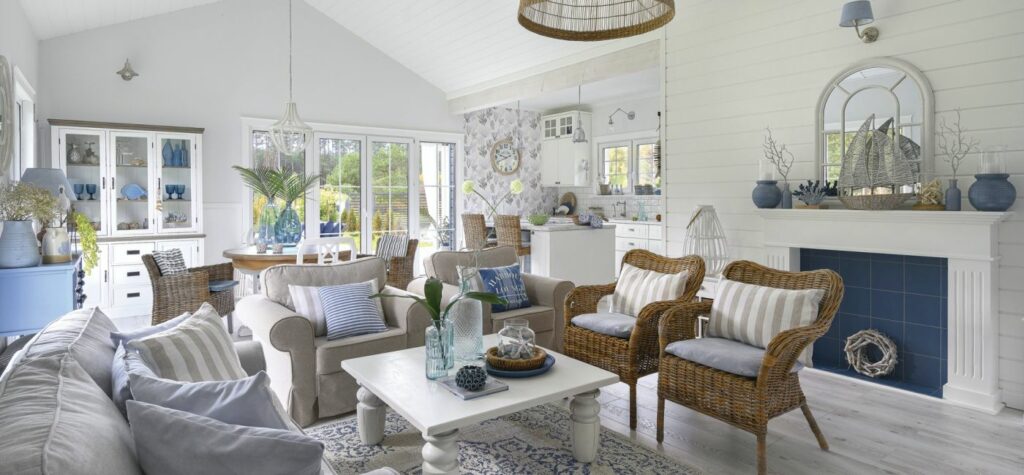
This article explores how to incorporate Hampton style into modern homes by blending coastal influence with minimalism for a sophisticated yet inviting atmosphere. Key elements include selecting a serene color palette of ocean blues, sandy neutrals, and whites, and using natural textures such as weathered wood, soft fabrics, and glass to create a cohesive coastal aesthetic. Functional decor is emphasized, with recommendations for multi-functional furniture, creative storage solutions, and the integration of natural lighting to enhance both beauty and practicality.
To cultivate a peaceful living environment, the article suggests creating zen spaces by optimizing natural light, choosing thoughtfully designed furniture, and incorporating elements of nature through indoor plants and natural textiles. Maintaining a decluttered and harmonious space with mindful decor and routines can further enhance tranquility. For additional insights and design inspiration, the article encourages visiting resources dedicated to coastal decor.


